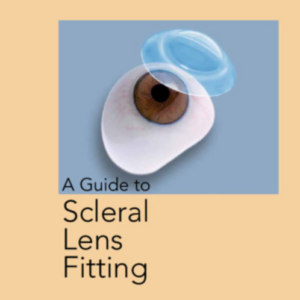To comprehend the concept of multifocal contact lenses, it’s important to have a basic understanding of contact lenses themselves. This section will provide a brief introduction to contact lenses and discuss the common types available, including popular brands like Dailies Total 1 Multifocal, Biofinity Multifocal, Air Optix Plus HydraGlyde Multifocal, Acuvue Oasys Multifocal, Acuvue Moist Multifocal, and more.
Brief Introduction to Contact Lenses
Contact lenses are thin, curved lenses placed directly on the surface of the eye to correct vision problems. They offer an alternative to traditional eyeglasses, providing a more natural field of view and freedom from frames. Contact lenses are suitable for various vision conditions, including nearsightedness, farsightedness, astigmatism, and presbyopia.
These lenses are designed to sit comfortably on the cornea, the clear front surface of the eye. They correct vision by refracting light rays, focusing them precisely onto the retina at the back of the eye. By doing so, contact lenses help to correct refractive errors and provide clear vision.
Common Types of Contact Lenses
There are several types of contact lenses available, each designed to meet specific vision needs and preferences. The most common types include:
| Type | Description |
|---|---|
| Soft Contact Lenses | Made from flexible and water-absorbing materials, soft contact lenses are known for their comfort and ease of use. They conform to the shape of the eye and are available in various options, such as Dailies Aquacomfort Plus Multifocal and Biofinity Toric Multifocal. |
| Rigid Gas Permeable (RGP) Contact Lenses | RGP lenses are made from durable and oxygen-permeable materials. They provide sharper vision and are suitable for individuals with astigmatism or more complex vision conditions. |
| Toric Contact Lenses | Toric lenses are designed specifically to correct astigmatism, a common condition where the cornea has an irregular shape. These lenses have different powers in different meridians of the lens to correct astigmatism effectively. For more information on toric lenses, refer to our article on what are toric contact lenses? |
| Multifocal Contact Lenses | Multifocal contact lenses, such as Acuvue Oasys Multifocal and Air Optix Multifocal, are designed to address presbyopia, allowing wearers to see clearly at multiple distances. |
What are Multifocal Contact Lenses?
Multifocal contact lenses are a popular option for individuals who require vision correction for multiple distances. These lenses are designed to address presbyopia, a common age-related condition that affects near vision. Let’s explore the definition and purpose of multifocal contact lenses, as well as how they work.
Definition and Purpose of Multifocal Contact Lenses
Multifocal contact lenses are a type of corrective lens that contains multiple prescription powers within a single lens. Unlike traditional contact lenses that correct vision for a single focal point, multifocal lenses provide clear vision at multiple distances, including near, intermediate, and far. This allows wearers to see objects at varying distances without the need for reading glasses or switching between different pairs of glasses.
The purpose of multifocal contact lenses is to provide individuals with presbyopia the convenience and flexibility of clear vision at different distances. Presbyopia occurs when the natural lens of the eye loses its ability to focus up close, resulting in difficulty reading small print or seeing objects near the eye. Multifocal contact lenses help correct this condition by offering a range of prescription powers within a single lens, enabling wearers to see clearly at various distances.
How Multifocal Contact Lenses Work
Multifocal contact lenses work through a combination of different lens designs that incorporate multiple prescription powers. These designs can include simultaneous vision, concentric ring, or aspheric designs.
In simultaneous vision multifocal contact lenses, different prescription powers are present across the lens surface. This allows wearers to simultaneously focus on objects at different distances, as the brain automatically selects the appropriate power for the desired distance.
Concentric ring multifocal contact lenses have distinct zones in concentric rings, each with a specific prescription power. Depending on the wearer’s visual needs, they can look through the appropriate ring to achieve clear vision at the desired distance.
Aspheric multifocal contact lenses have a gradual change in prescription power across the lens surface. This design allows for a smooth transition between near, intermediate, and far vision, providing wearers with clear vision at various distances.
It’s important to note that adapting to multifocal contact lenses may require some time and adjustment. Your eye care professional can guide you through the process and provide recommendations for the most suitable lens design based on your visual needs.
In the next sections, we will explore the benefits of multifocal contact lenses and the different types available to help you make an informed decision. For more information on contact lens care and maintenance, take a look at our article on how to clean contact lenses.
Benefits of Multifocal Contact Lenses
Multifocal contact lenses offer numerous benefits to individuals who require vision correction for both near and distance vision. These lenses provide clear vision at different distances, offering convenience and versatility for contact lens wearers. Additionally, multifocal contact lenses can effectively correct presbyopia, a common age-related vision condition.
A. Clear Vision at Different Distances
One of the primary advantages of multifocal contact lenses is their ability to provide clear vision at various distances. These lenses incorporate multiple prescription powers within a single lens, allowing wearers to see clearly both up close and in the distance. With multifocal lenses, individuals no longer need to switch between different pairs of glasses or rely solely on reading glasses for near vision tasks. The different zones in the lens design allow for seamless transitions between vision ranges, providing sharp and focused vision at any distance.
B. Convenience and Versatility
Multifocal contact lenses offer convenience and versatility for individuals with presbyopia or age-related vision changes. With these lenses, wearers can enjoy the freedom of not having to carry multiple pairs of glasses or constantly switch between different prescriptions. Multifocal contact lenses eliminate the need for readers or bifocals, allowing individuals to seamlessly transition between various activities without the hassle of constantly adjusting their eyewear. Whether it’s reading a book, working on a computer, or driving, multifocal contact lenses provide clear vision for all your daily activities.
C. Presbyopia Correction
Presbyopia is a common condition that affects individuals as they age, causing a gradual loss of near vision. Multifocal contact lenses offer an effective solution for correcting presbyopia. By incorporating different prescription powers within the lens, multifocal contacts address both near and distance vision needs. This allows wearers to enjoy clear vision for various tasks without the need for separate reading glasses. Multifocal contact lenses provide a convenient and comfortable option for individuals with presbyopia, allowing them to maintain their active lifestyle without compromising their vision.
When considering multifocal contact lenses, it’s important to consult with an eye care professional to determine the most suitable option for your specific needs. They can guide you in selecting the appropriate type and fit of multifocal lenses based on your prescription, lifestyle, and eye health. Additionally, proper care and maintenance of your multifocal contact lenses are essential to ensure optimal vision and eye health. For detailed instructions on cleaning and caring for your lenses, refer to our article on contact lens exams.
Multifocal contact lenses provide a convenient and effective solution for individuals with presbyopia, offering clear vision at different distances and eliminating the need for multiple pairs of glasses. Consult with your eye care professional to explore the options available and find the best multifocal contact lenses for your vision needs.
Types of Multifocal Contact Lenses
Multifocal contact lenses offer a convenient solution for individuals with presbyopia who require correction for both near and distance vision. These lenses come in various designs to address different visual needs. Let’s explore three common types of multifocal contact lenses: simultaneous vision multifocal contact lenses, concentric ring multifocal contact lenses, and aspheric multifocal contact lenses.
1. Simultaneous Vision Multifocal Contact Lenses
Simultaneous vision multifocal contact lenses are designed with multiple power zones that allow users to see clearly at different distances simultaneously. These lenses work by splitting light entering the eye into different focal points, enabling vision correction for both near and far objects.
The brain adapts to this simultaneous vision by automatically selecting the appropriate focal point based on the distance of the object being viewed. While some individuals may experience a slight adjustment period when adapting to these lenses, many find them to be a comfortable and effective solution for their vision needs.
2. Concentric Ring Multifocal Contact Lenses
Concentric ring multifocal contact lenses feature a series of concentric rings with varying powers, allowing for vision correction at different distances. The center of the lens typically corrects near vision, while the outer rings provide distance vision correction.
These lenses work by relying on the visual system’s ability to use different parts of the lens for different distances. By focusing through the appropriate ring, wearers can achieve clear vision at both near and far distances.
3. Aspheric Multifocal Contact Lenses
Aspheric multifocal contact lenses are designed with a gradual transition of powers across the lens surface. Unlike the distinct zones of simultaneous vision and concentric ring lenses, aspheric lenses provide a more gradual power shift. This design aims to provide a smooth transition between near and distance vision, reducing visual disturbances such as halos or glare.
Aspheric multifocal lenses offer wearers a more natural visual experience, minimizing the visual jumps experienced with other multifocal lens designs. These lenses are often preferred by individuals who prioritize visual quality and comfort.
When considering the different types of multifocal contact lenses, it’s essential to consult with an eye care professional to determine the most suitable option for your specific visual needs. They will take into account factors such as your prescription, lifestyle, and personal preferences to guide you in making an informed decision.
Proper care and maintenance of multifocal contact lenses are also crucial for ensuring optimal vision and eye health. Be sure to follow the recommended cleaning and disinfection guidelines provided by your eye care professional.
By understanding the different types of multifocal contact lenses available, you can make an informed decision about which option may best suit your presbyopia correction needs. Remember to consult with your eye care professional for personalized advice and recommendations.
Considerations for Multifocal Contact Lens Wearers
While multifocal contact lenses offer numerous benefits for individuals with presbyopia, there are some important considerations to keep in mind when wearing them. These considerations include adjusting to multifocal contact lenses, proper care and maintenance, and consultation with an eye care professional.
Adjusting to Multifocal Contact Lenses
It is common for multifocal contact lens wearers to experience an adjustment period when transitioning from single-vision lenses. The brain needs time to adapt to the different focusing powers of multifocal lenses. During this adjustment period, it is important to follow the guidance of your eye care professional and wear the lenses as prescribed. It may take a few days or weeks for your eyes to fully adapt and for you to achieve optimal vision at all distances. If you have any concerns or difficulties during the adjustment period, don’t hesitate to reach out to your eye care professional for guidance.
Proper Care and Maintenance
Proper care and maintenance of multifocal contact lenses are essential for maintaining good eye health and maximizing the lifespan of your lenses. Follow the instructions provided by your eye care professional and the manufacturer for cleaning and disinfecting your lenses. It is crucial to wash your hands thoroughly before handling your lenses and to use the recommended cleaning solutions. Avoid using tap water or saliva to clean your lenses, as they can introduce harmful bacteria. For detailed instructions on how to clean your contact lenses, refer to our article on Lens fitting process.
Additionally, it is important to adhere to the recommended replacement schedule for your multifocal contact lenses. Depending on the type of lenses prescribed, they may need to be replaced daily, bi-weekly, or monthly. Using lenses beyond their recommended lifespan can increase the risk of complications and reduce the effectiveness of vision correction.
Consultation with an Eye Care Professional
If you are considering multifocal contact lenses or currently wear them, it is crucial to consult with an eye care best in town professional. They will evaluate your eye health, assess your vision needs, and determine if multifocal contact lenses are suitable for you. An eye care professional can prescribe the most appropriate type of multifocal lenses based on your specific requirements. Regular follow-up appointments are also important to monitor the health of your eyes and ensure that your lenses are providing optimal vision correction.
Remember, only an eye care professional can accurately diagnose and prescribe contact lenses, so it is essential to consult with them for personalized advice and guidance.
By considering these factors and following the recommendations of your eye care professional, you can make the most of your multifocal contact lenses and enjoy clear vision at various distances.
Frequently Asked Questions – FAQs
Can I use multifocal contact lenses for astigmatism?
Yes, some multifocal lenses, such as Biofinity Toric Multifocal, are designed to address both presbyopia and astigmatism.
How long does it take to adjust to multifocal contact lenses?
The adjustment period varies, but most wearers adapt within a few days to weeks.
Are there daily disposable multifocal contact lenses?
Yes, options like Dailies Total 1 Multifocal 90 Pack offer the convenience of daily disposables.
Conclusion
Multifocal contact lenses, including popular brands like Acuvue Moist Multifocal and Air Optix Multifocal, provide a versatile solution for individuals with presbyopia. Understanding their types, benefits, and considerations, along with proper care, ensures wearers enjoy clear vision at various distances without the hassle of multiple pairs of glasses.
Consultation with an eye care professional is key to finding the most suitable multifocal lenses based on individual needs and preferences.




